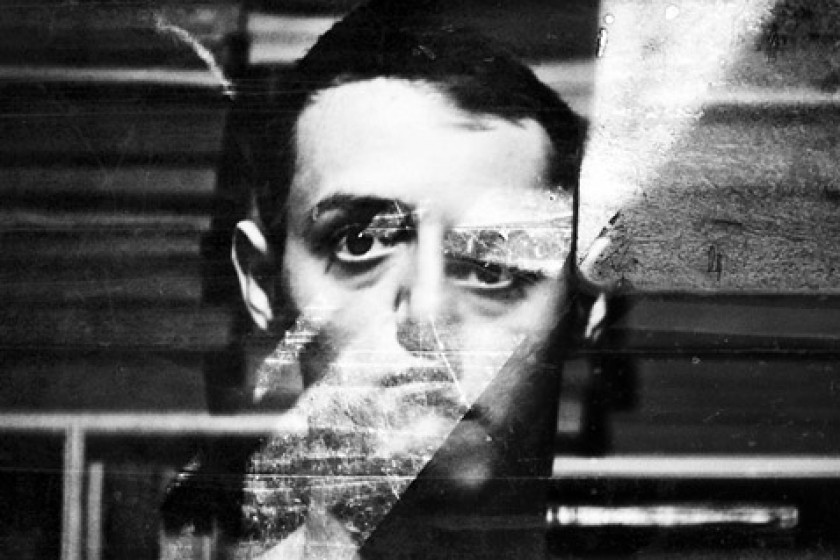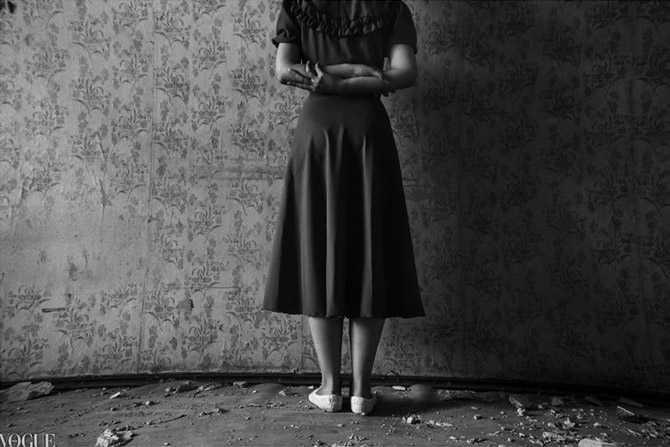
Aram Kirakosyan: The “Mad” Photographer in Black and White
I first came across Aram’s photograpks in Facebook.
It was his “Madness” series that initially caught my eye. When I saw his self-portrait, I figured that the man’s emotions and life experiences had lead him to create such a series. I then began to take a look at his other works. Most were in black and white.
Photographer Aram Kirakosyan describes himself as a “restless guy” who took up photography as therapy for his depression. Afterwards, this hobby of photo-therapy turned into his main work and element. There came a day when Aram decided to chuck everything else and devote his full time and energy into photography.
During our conversation, Aram constantly smoked and spoke simply and sincerely. He talked about his interests and approaches to photography, and about society’s blemishes and inadequacies. The words he uttered the most were – terrible, get nervous and absurd. Grinning, Aram said that back in the day when he wrote a lot, he didn’t talk much, and now, when he’s painting, he can’t stop talking.
Aram is especially interested in documentary photography.
“It’s interesting because it’s real life. It might not be aesthetically beautiful, but you must give that which is there,” he explains. “You must participate in real life, and those people must confide in you. You have to respect them and their problems.”
A portion of Aram’s “Madness” series is also of a documentary nature. One day, the photographer decided to shoot pictures of people wearing straight-jackets, acting as if they were mad. Later, he wanted to photograph people who were truly insane. Aram visited a psychiatric ward several times and took photos, but the real portion of the series remains unfinished.
As a photographer, Aram wasn’t allowed into the psychiatric ward. Instead, he started to talk with patients milling about in the yard. When he asked them what they needed, they all answered, “coffee and cigarettes”.
Aram couldn’t understand how it was possible to group the young and old, diagnosed with various maladies, together in one place – for example, allowing a child with epilepsy to room with a bunch of schizophrenics.

“To be honest, it’s tough photographing such scenes. I was afraid that if I stayed there for a week I’d go nuts myself, Aram says. “If you enter someone else’s life, it’s impossible not to have an impact on them.”
Aram is convinced that there are loads of themes and issues to photograph in Armenia, but that we simply tend to remain indifferent. He then confesses that his world view, like his photos, is black and white. The photographer says it’s easier for him to work with the color white where all the colors are condensed.
“Don’t you add other colors in your life?” I ask him.
“The problem is that you imagine white and black as monochrome. They aren’t for me. Colorless is something that doesn’t have a surface or characteristic. For me, this is beautiful and tragic at the same time.”
Aram like to photograph old factories and abandoned places, where the images are matchless, as well as interesting faces randomly spotted in the city’s streets. In a word, he likes to experiment, mixing elements of painting and photography.
“I don’t like to use Photoshop. It really annoys me,” Aram tells me. Thus, he has created his own version of the software. “It’s better for me to take a photo and then color it with gouache or something else, rather than doing the same with Photoshop. There is paint in your hand and it has a smell. Later, you can’t erase what you’ve done and start over.”
Aram mostly creates self-portraits in this style. The photographer confesses that he’s quite critical regarding his own work. Thus, when he starts believing that his work is pretty good, he does a reality check by looking at what photographers were creating fifty or one hundred years ago. It’s then that Aram understands he’s got a lot of room to still grow.
“It’s my life’s guiding principle; to do what I want and what I like,” Aram says. “No one can do what I like any better than me. Neither can I do what someone else likes any better than they can.”
In his studio, when it comes time to photography someone, it’s very important for Aram to create the right relationship between him and his subject. They must accept the other as they are and create a sense of trust. Only then can the final product be a success.
Aram says each individual has at least one gesture that only characterizes him or her. To be able to capture that moment results in a miraculous photo.
While Aram tells me that he’s doing what he likes at the moment, what interests and moves him, he wishes that photography in Armenia could advance a step and that photographers here could have the chance to work overseas.
Aram doesn’t mean that he’s thinking of leaving Armenia, but simply that his work can find an audience beyond the confines of the country.
Photos: Aram Kirakosyan’s Facebook page
 Videos
Videos Photos
Photos




Comments (1)
Write a comment